What's New
Displaying results 2861 - 2870 of 4052
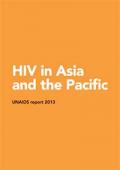
Resource | Publications,
The AIDS response in Asia and the Pacific has seen some of the world’s greatest successes. HIV infection rates have fallen in countries across the region in the past decade — significantly in some; a growing number of people are receiving life-saving HIV treatment; domestic financing for AIDS has risen; and, governments across the region are increasingly addressing stigma and discrimination related to HIV and key populations at highest risk.
This report provides an overview of the epidemic and the response in Asia and the Pacific as well as focus on critical progress and challenges in the achievement of the 10 targets, towards getting Asia and the Pacific to zero new infections, zero discrimination and zero AIDS deaths.

Resource | Presentations,
Presentation from Expert Meeting on the Implementation of the Outcome of the Asia-Pacific High-level Intergovernmental Meeting on the Assessment of Progress against Commitments in the Political Declaration on HIV/AIDS and the Millennium Development Goals
11 December 2013, Bangkok, Pullman Bangkok King Power

Resource | Presentations,
Presentation from Expert Meeting on the Implementation of the Outcome of the Asia-Pacific High-level Intergovernmental Meeting on the Assessment of Progress against Commitments in the Political Declaration on HIV/AIDS and the Millennium Development Goals
11 December 2013, Bangkok Pullman Bangkok King Power
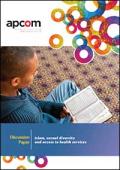
Resource | Publications,
In the Asian region, Afghanistan, Bangladesh, Pakistan, Maldives, Malaysia and Indonesia have a majority Muslim population. Although Islam is in a minority in India, the influence it has on men who have sex with men (MSM) and transgender people is similar to that of MSM and transgender people in majority Muslim countries. This is indicative of the fact that Orthodox Islam comes with a particular power that has an overwhelming influence on Muslims, irrespective of population size and geography.
This discussion paper examines why Islam matters in preventing HIV, what Islam and Muslim scholars say about MSM and transgender people, as well as how this impacts on the lives of MSM and transgender people and their access to health services. Muslim MSM were interviewed to provide some anecdotes for the discussion paper, and desk-based research was undertaken. It provides a number of recommendations aimed at human rights organisations, human rights defenders, gender activists, policy makers, Islamic scholars and Islamic organisations.
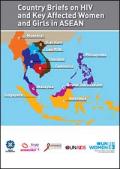
Resource | Publications,
The briefs are intended as a resource for policymakers in Member States of the Association of Southeast Asian Nations (ASEAN), as well as planners, programme managers, health professionals, service providers, civil society organizations, including key population networks, women’s rights organizations, and others who are advocating for the needs and rights of key affected women and girls. It is hoped that key affected women and girls in each country will be able to use the country briefs to advocate on their own behalf, as well as in partnership with women's rights groups, key population networks and human rights advocates for the information and services to which they are entitled under international health and human rights standards.
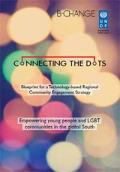
Resource | Publications,
Connecting the Dots (CTD) is a regional community engagement strategy that lays out a vision for harnessing the potential and immense value that technology can bring to personal and community development. CTD seeks to improve the health and human rights situation for young people from sexual or gender minorities – including but not limited to lesbians, gays, bisexuals and transgender persons (LGBT) – by using web/mobile-based platforms and web-apps to support their wellbeing, raise their awareness of human rights and encourage their civic engagement.
For many young people, burgeoning awareness of their sexual orientation and gender identity can be a process shrouded in secrecy and fraught with shame. For some, awareness is clearly defined as being lesbian, gay, bisexual or transgender (LGBT), while for others the journey towards self-knowledge is not so clear-cut. It is at this stage in the lives of young people that community development interventions can provide numerous benefits in terms of improving their well-being – especially through promoting health-seeking behaviour, mutual support and a sense of community – and developing their capacity for community advocacy in the areas of health and human rights.
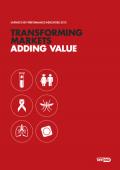
Resource | Publications,
Unitaid produced a new strategy for 2013-2016. The strategy concentrates on 6 Strategic Objectives that focus on products needed to reduce the burden of the three diseases where that burden is highest, in the world’s poorest populations. To support implementation of the new strategy, Unitaid’s Board approved a new set of Key Performance Indicators (KPIs) that are aligned with the strategy and designed to measure results across the Strategic Objectives and over time. This report is the first to present results for the new KPIs and sets the benchmark against which subsequent years can be measured and achievements demonstrated.
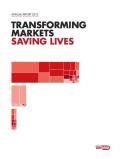
Resource | Publications,
UNITAID’s Strategy 2013-2016 guides the organization’s response to HIV/AIDS, malaria and TB. In total, these global epidemics kill almost 4 million people every year. Forward looking and flexible, UNITAID collects intelligence on product markets for these diseases in order to inform its investments, which are implemented by the world’s top development organizations.
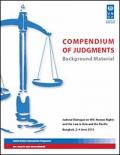
Resource | Publications,
As agents of justice, it is critical that members of the judiciary are empowered with up-to-date knowledge and understanding of the science of HIV transmission, prevention, treatment, care and support; epidemiological developments; and the evolving roles of the law and the judiciary in HIV responses. Enhancing the capacity of the judiciary to address HIV-related legal and human rights issues is a vital component of creating enabling legal environments that support eff ective national HIV responses. Building on the work of the Global Commission on HIV and the Law, The Compendium of Judgments, HIV, Human Rights and the Law, is a collation of progressive jurisprudence on HIV-related matters that highlights how the law has been used to protect individual rights. The compendium presents a user-friendly compilation of judgments from different national and regional jurisdictions.
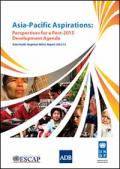
Resource | Publications,
The Asia-Pacific region as a whole has had considerable success with the MDGs, particularly in reducing levels of poverty. Nevertheless, the region is off track when it comes to hunger, health and sanitation – and even in areas such as poverty a number of countries are lagging some way behind. After the target date of 2015, there will therefore be a significant ‘unfinished agenda’. The region also faces many emerging threats including rising inequality and unplanned urbanization, along with climate change and environmental pressures such as pollution and water scarcity.
This report presents some perspectives on the post-2015 development agenda as part of the system-wide discussion initiated by the Secretary-General. Being much less locked into traditional development pathways, Asia and the Pacific region has a clear window of opportunity to foster change. The perspectives and aspirations of this region for a new United Nations Development Agenda beyond 2015 should be of much interest to the global community.





